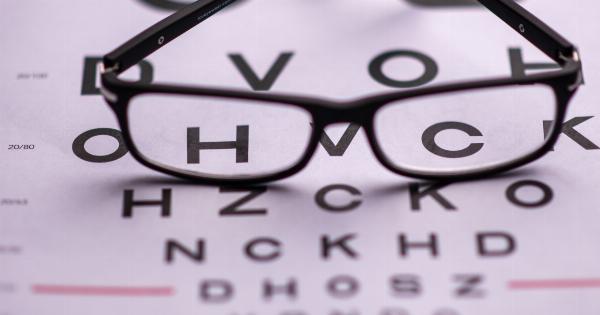Dry eye is a common condition that occurs when the eyes either do not produce enough tears or the tears evaporate too quickly. It can cause discomfort, irritation, and even affect vision.
While anyone can experience dry eye at some point, certain factors can put individuals at a higher risk for developing the condition.
What is Dry Eye?
Dry eye, also known as keratoconjunctivitis sicca, is a condition that affects the tear film on the surface of the eye. The tear film consists of three layers: the lipid layer, the aqueous layer, and the mucin layer.
These layers work together to keep the eyes lubricated, nourished, and protected.
When an individual suffers from dry eye, either the eyes do not produce enough tears or the tears evaporate too quickly, leading to an imbalance in the tear film.
This can result in uncomfortable symptoms, such as stinging, burning, itching, redness, blurry vision, or a gritty sensation in the eyes.
Risk Factors for Dry Eye
While dry eye can affect anyone, certain factors can increase an individual’s risk for developing the condition. These risk factors include:.
1. Age
As we age, the risk of developing dry eye increases. This is because tear production tends to decrease with age. In fact, it is estimated that over 60% of individuals aged 65 and above suffer from dry eye to some degree.
2. Gender
Women are more likely to experience dry eye compared to men. Hormonal changes, such as those that occur during pregnancy or menopause, can affect tear production and lead to dry eye symptoms.
3. Medical Conditions
Certain medical conditions can increase the risk of dry eye. Individuals with autoimmune diseases, such as Sjögren’s syndrome, rheumatoid arthritis, or lupus, are more prone to developing dry eye.
Diabetes, thyroid disorders, and vitamin A deficiency can also contribute to dry eye symptoms.
4. Medications
Several medications can cause or worsen dry eye symptoms. Antihistamines, decongestants, antidepressants, certain blood pressure medications, and hormone replacement therapy can all affect tear production and quality.
5. Environmental Factors
Environmental factors, such as dry or windy climates, high altitudes, or exposure to smoke or air pollution, can contribute to dry eye.
Additionally, spending long hours in front of digital screens or in air-conditioned or heated rooms can increase the risk of developing dry eye symptoms.
6. Contact Lens Wear
Individuals who wear contact lenses are more susceptible to dry eye. Contact lenses can disrupt the natural tear film and lead to decreased tear production.
It is important to follow proper lens hygiene and use lubricating eye drops recommended by an eye care professional.
7. Eye Surgery
Certain eye surgeries, such as LASIK or cataract surgery, can temporarily disrupt tear production and cause dry eye symptoms. In most cases, these symptoms improve over time as the eyes heal.
However, some individuals may experience long-term or chronic dry eye after eye surgery.
8. Prolonged Screen Time
In today’s digital age, many individuals spend extended periods of time looking at screens, whether it’s for work or leisure. This can lead to decreased blink rate and increased tear evaporation, resulting in dry eye symptoms.
Taking regular breaks and practicing the 20-20-20 rule (looking away from the screen every 20 minutes at an object 20 feet away for 20 seconds) can help alleviate symptoms.
9. Smoking
Smoking is a known risk factor for various eye conditions, including dry eye. Chemicals in tobacco smoke can irritate and inflame the eyes, contributing to dryness and discomfort.
Quitting smoking not only benefits overall health but also helps reduce the risk of dry eye and other eye-related problems.
10. Poor Nutrition
Nutritional deficiencies, particularly in omega-3 fatty acids, vitamin D, and vitamin A, can increase the risk of dry eye. These nutrients play a vital role in maintaining healthy tear production and eye function.
Including foods rich in these nutrients, such as fatty fish, leafy greens, and colorful fruits and vegetables, can support overall eye health.
Conclusion
Understanding the risk factors for dry eye can help individuals take proactive steps to prevent or manage the condition.
While some risk factors, such as age and gender, cannot be controlled, others can be addressed through lifestyle changes or proper eye care. If you experience persistent dry eye symptoms, it is essential to consult with an eye care professional for a comprehensive evaluation and appropriate treatment.
























